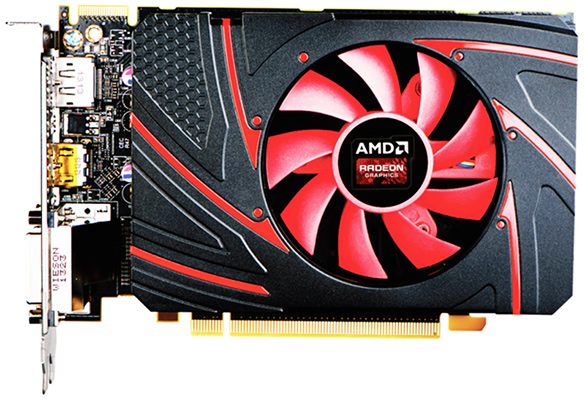AMD Radeon R7 260: Affordable DX11 GPU
Introduction and Specifications
AMD is closing out the year with yet another new GPU announcement, though this one isn’t quite like the last few we’ve brought you. If you’ve been hanging around here for any length of time recently, you’ve probably read about the semi-new Radeon R9 and R7 series cards that AMD launched back in early October. If that wasn’t enough, the company soon followed up with the truly new, ultra-powerful Radeon R9 290X, based on the GPU formerly codenamed Hawaii. And then a few days after that, the slightly tamer Radeon R9 290 hit the scene, and at a very aggressive price point to boot. There’s also been a bit of drama since then due to some significant performance variability between R9 290 and 290X series cards, but that’s still playing out.
In the meantime, AMD wants to bring its GCN architecture, Mantle support, and TrueAudio engine down to ever lower price points, with a new member of the Radeon R7 family, dubbed the Radeon R7 260. As its name suggests, the Radeon R7 260 is very similar to its big brother, the R7 260X, which itself is similar to the previous-gen Radeon HD 7790. We’ll explain just how closely related all of the cards are a little later, but for now, take a gander at the specs and reference card. We’ll get to the performance on the pages ahead...

AMD Radeon R7 260 Reference Card
|
As you can surmise from the table above, the Radeon R7 260 is a trimmed down version of the Radeon R7 260X. The reference cards look virtually identical, but the lower-end Radeon R7 260's GPU features fewer active stream processors and the cards are outfitted with lower-clocked memory and smaller frame buffers.
Whereas the Radeon R7 260X sports the Bonaire GPU's full complement of 896 stream processors, the R7 260 has only 768. The R7 260 also has a lower peak engine clock of up to 1GHz. And 1GB of memory on the Radeon R7 260 clocks in at an effective data rate of 6.0Gbps versus 6.4Gbps on the 260X, though they both share the same 128-bit memory bus. The combined effect of fewer stream processors and lower memory and GPU clocks results in lower compute performance, fillrate, and memory bandwidth overall. For example, the Radeon R7 260 offers peak compute performance of 1.54TFLOPs and memory bandwidth of 96GB/s, while the higher-end R7 260X offers 1.97TFLOPS and 104GB/s.
Outputs on the card consist of dual, dual-link DVIs, a full sized HDMI, and a DisplayPort. Though there are only four ports, the card can power up to 6 monitors through the use of a DisplayPort MST hub, like the other members of the Radeon R7 and R9 series.
With all that said, the card you see here won't be sold at retail. AMD has informed us that all of its board partners will be offering custom Radeon R7 260 cards when they hit store shelves in a few weeks, hence the reason we're calling this article a preview.







